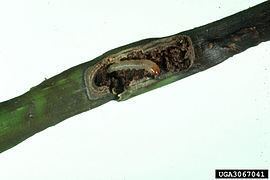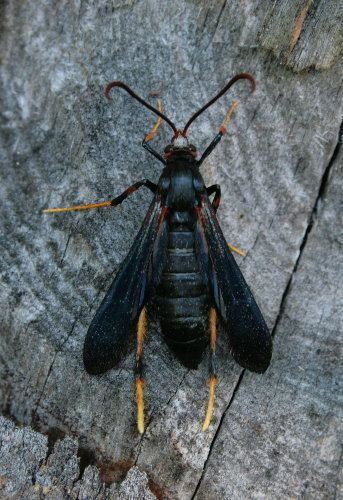Rank Species | Genus Podosesia Order Butterflies and moths | |
Similar Butterflies and moths, Synanthedon pictipes, Synanthedon exitiosa, Synanthedon scitula, Prionoxystus robiniae | ||
The ash borer (Podosesia syringae), or lilac borer, is a clearwing moth in the family Sesiidae. It is found throughout Canada and the United States and can be a pest of ash and lilac.
Contents
Ash borer bloodlands full album
Appearance

Like other clear wing moths, ash borers have partially transparent wings due to a lack of colored scales on the wings. The body is brown with yellowing striping on the legs and abdomen, and can give the appearance that the ash borer is a paper wasp.
Hosts and life cycle

Ash borer adults feed on nectar and will lay their eggs in the bark of lilac, ash, and privet, but can attack closely related plants in its range within Canada and North America. Larvae feed beneath the bark by chewing into the sapwood. Larval feeding can destroy the tree's phloem, which weakening and possibly kill already stressed or very young trees by increased potential for wind damage or wilting. Pupae overwinter in the feeding gallery and emerge as adults the following spring. Adults begin to emerge between April and July or 300 to 500 growing degree days above 50 °F (10 °C) or about one week after full bloom of lilac.
Monitoring and treatment
Pheromone traps can be used to monitor for the presence of ash borers. Minimizing tree stress through mulching, watering during drought, and avoiding damage from equipment can reduce the occurrence of damage. In areas where ash borers are present and causing damage, insecticides can be applied to the trunk and branches before larvae chew into the bark. However, insecticides, are not effective once larvae are inside the tree. Even systemic insecticides that are incorporated by the tree that are normally effective for other wood-boring insects are not effective.

